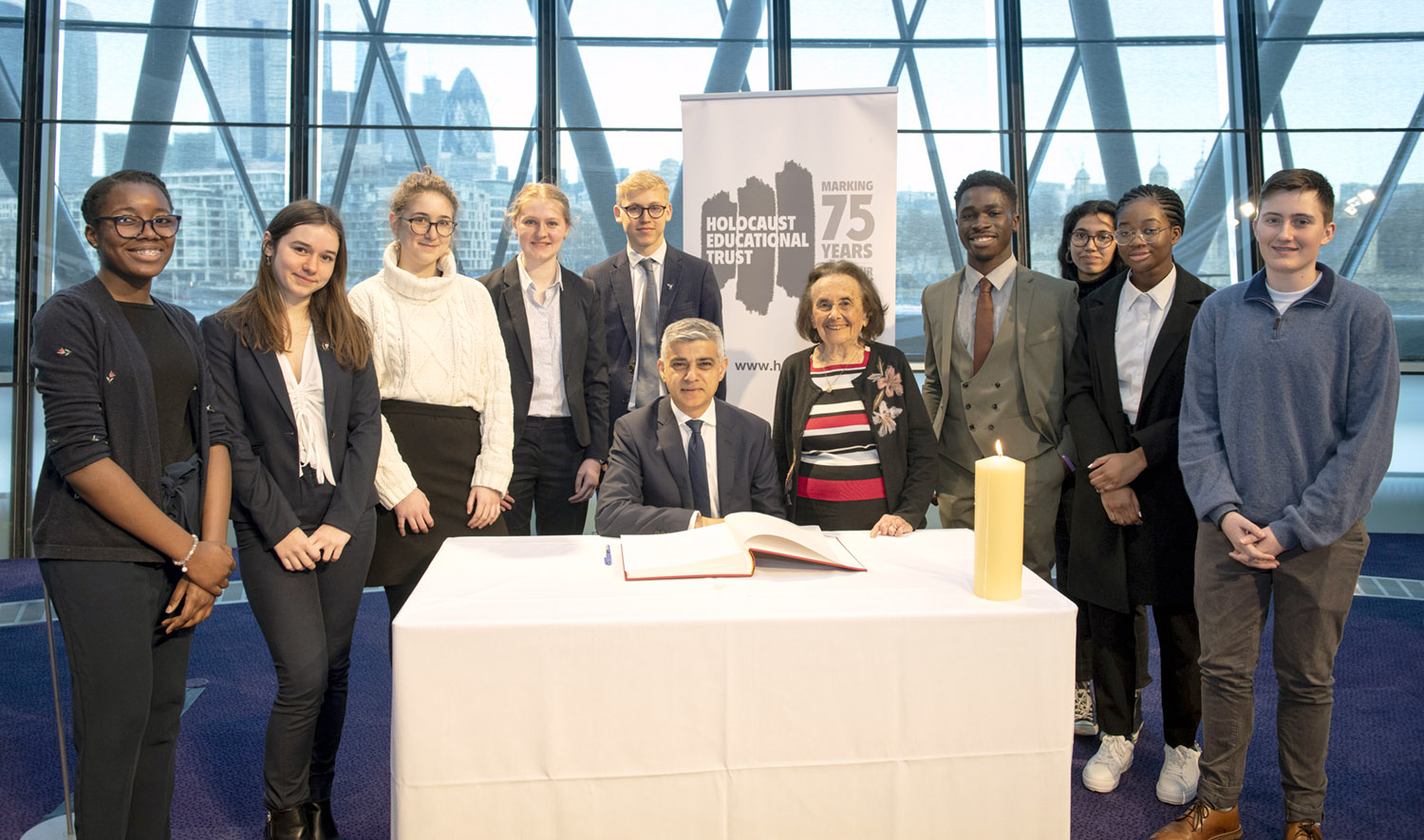The Holocaust is remembered in many different ways by people all around the world. This article highlights some important dates and different forms of remembrance to help inform and inspire you with your own projects.
Days of Remembrance
27th January – International Holocaust Remembrance Day
Recognised internationally by UN member states, 27th January is International Holocaust Remembrance Day, marking the anniversary of the liberation of Auschwitz-Birkenau. Its primary purpose is to be an official date to commemorate victims of Nazi persecution and to promote Holocaust education worldwide. Some nations also commemorate other days, often marking significant national dates – for example, France remembers the Vel d’Hiv roundup, which saw French police assist in the mass arrest of over 13,000 Jews, on 16th July.
In the UK, 27th January is marked as Holocaust Memorial Day, our own national day of remembrance. Supported by the Holocaust Memorial Day Trust, the day remembers the 6 million Jews and other victims murdered during the Holocaust, as well as those murdered in previous and subsequent genocides. Events occur across the country, with the Holocaust Memorial Day Trust hosting a UK-wide commemoration event and the Holocaust Educational Trust offering various opportunities for people to hear the testimonies of Holocaust survivors.

27 Nisan (during April or May) – Yom HaShoah
Yom HaShoah is Israel’s national day of commemoration for the 6 million Jewish victims of the Holocaust, also marked in and beyond Jewish communities across the world. The date was chosen to mark the anniversary of the Warsaw ghetto uprising. Yom HaShoah is a day of education, remembering victims, marking the achievements of the survivors and the importance of passing on their testimonies. As well as traditional remembrance events and survivor testimonies, Yom HaShoah is also marked by:
- March of the Living: An international educational programme bringing together young people from within and beyond Jewish communities across the world. Participants visit sites in Poland culminating in a march joined by thousands of people between Auschwitz I and Auschwitz-Birkenau. Read more about it in this article from our last newsletter.
- Zikaron Basalon: Meaning ‘remembrance in the living room’, it is an initiative bringing small groups together to listen to a survivor, providing a unique and intimate environment to remember the Holocaust.


Visual Memorials
There are many different forms of visual remembrance, most often taking the form of monuments, plaques and statues. Here are some more unique examples of how the importance of remembrance is passed on.
Stolpersteine
Designed by artist Gunter Demnig, these ‘stumbling stones’ are brass plaques or stones placed into the ground at the last known place of residency of victims of the Holocaust, inscribed with their names. Although not without controversy, these offer an alternative form of remembrance away from large monuments, drawing focus to the humanity of each individual victim by highlighting their names and serving as a continuous reminder of the extent of the Holocaust to passers-by. They can be found in at least 1,200 places across Europe, from Norway to Croatia, with the first one being installed in London earlier this year - you can read more about this in this issue's Creative article.'
Visitation stones
A traditional custom in Jewish cemeteries, a visitation stone may be placed on a grave as a form of remembrance. Many also practice this when visiting key sites or memorials related to the Holocaust.
Virtual Remembrance and Education
Virtual databases and content provide a vital platform to increase access to educational resources and can help ensure the longevity and reach of survivors’ testimonies.
USC Shoah Foundation – Visual History Archive Online
The USC Shoah Foundation focuses on preserving and providing testimonies online with a global reach. Their website hosts a wide range of content and digital testimonies, as well as access to the Visual History Archive, holding thousands of video testimonies of survivors and witnesses of genocide.
Yad Vashem website – Digital Collections
Yad Vashem is the World Holocaust Remembrance Centre, being a leading museum, archive and research centre. Their website hosts a large variety of resources and educational content, including their digital collections, providing access to key sources such as the Central Database of Shoah Victims’ Names, an online photo archive, and an online library.
Museums and Exhibitions
Imperial War Museum Holocaust Galleries
The Imperial War Museum London recently opened its redesigned Holocaust Galleries under the direction of James Bulgin, who Ambassadors were incredibly privileged to take part in a workshop with at AmCon in London last month. Regional Ambassador Jack shares his reflections on the value the galleries have for our Ambassador community:
“The galleries take you on a journey from pre-war Jewish life across Europe to the horrors of the Holocaust and rebuilding lives after the war. During your time in the exhibition, you are connected to the stories of victims and survivors alike, with carefully arranged sound and lighting throughout. It’s difficult to convey just how powerful the exhibition is without seeing it for yourself, but it holds immense educational value to all those wanting to pass on the memory of the Holocaust to their communities and I highly recommend that Ambassadors visit if they want inspiration on how to Pass It On.”

Exhibitions and Photography
Art and photography can be a powerful tool for education and remembrance. For example, at the Imperial War Museum London, a temporary exhibition called 'Generations: Portraits of Holocaust Survivors' displayed portraits of survivors and their families, being a reminder of the power of survival and a celebration of their life and legacy.
How are you going to Pass It On to your community? Do you feel inspired by any of these methods? Let us know at This email address is being protected from spambots. You need JavaScript enabled to view it.!

